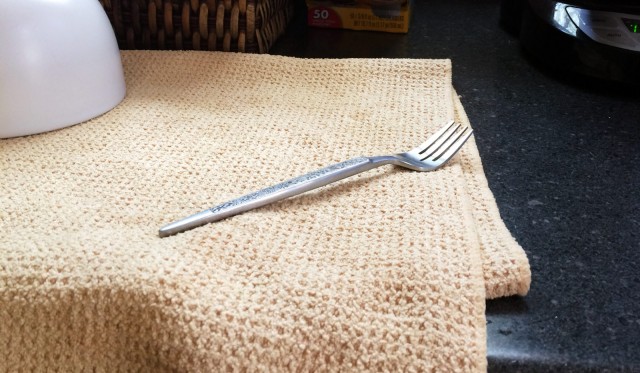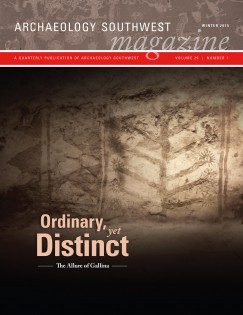- Home
- >
- Preservation Archaeology Blog
- >
- People’s Stuff
(July 24, 2015)—Archaeologists examine people’s stuff. As a former assistant museum curator, I can tell you that people’s stuff—at least, once that stuff is “vintage”—is pretty nifty. One of my favorite artifacts in the collections of the Arizona State Museum is a Tucson dog tag (license) from the 19-teens. (Huh? The wild western town of George Hand’s saloon diary was, but a few years later, regulating dog ownership?)
But that’s not really why archaeologists study people’s stuff. (Let’s just say that there is an avalanche of theory about this, and leave it at that.) Stuff—or “material culture,” if you want to speak our jargon—reveals much about how people lived, how they thought of themselves in relation to others, what they believed, and their orientation to their own past.
That last concept really resonated with me today as I grabbed a fork from the drawer of our office kitchen. It was, in fact, a fork that had been part of an ordinary stainless steel set at my Gran’s house in Chicago in the late 1960s and 1970s. She took care of me while my parents were at work. I can easily recall seeing, as I looked up from just below kitchen-counter level (color: goldenrod), the floral pattern on the handle of a knife spreading butter on my toast fingers.

After my Gran passed, my mom kept the set as an “extra,” surely because she couldn’t bear to part with it. When my parents joined me in Tucson a few years ago, I took it in as an extra set for the same reason. This past spring, when we needed utensils for microwaved lunches at work, I brought it in. So, I haven’t let go of it, exactly. (And I decided today to keep that one fork, just in case the set disappears, you know, as office utensils are wont to do…)
An archaeologist might find my fork or another of the “office” set, match it to a pattern in a reference catalog, and determine the era in which it was made, which would be earlier than the context in which it was found. They might learn that it was widely available, thus curtailing its interpretive value—or they might determine that the pattern was only available with green stamps, or only in a certain region. That might suggest someone saved it and brought it to Tucson. Then the archaeologist might wonder, why did someone save it?

My colleague Lewis Borck writes about this in the forthcoming (UPDATE! NOW AVAILABLE!) issue of Archaeology Southwest Magazine, which he co-edited with Mike Bremer (Santa Fe National Forest), and which will be released on Tuesday, July 28. “Ordinary, yet Distinct—The Allure of Gallina” examines a group of Ancestral Pueblo people who, apparently, chose to look to their own past as they resisted changes going on around them. One of Lewis’s research projects reported in the magazine suggests that some of them kept sherds of pottery that were much older than the contexts in which they were found—and the styles embodied in that pottery show connections to other regions.
Lewis’s analogy in his article is to the Wisconsin license plate he brought to Tucson from his home state and has hanging in his garage. So, what do you think a future archaeologist might be able to tell from that license plate, depending upon where they might find it? What might it say about Lewis and what he valued?
What are examples in your own life? Take a look at your stuff, and consider what it might reveal about your orientation—or lack thereof—to your past.
Explore the News
-
Join Today
Keep up with the latest discoveries in southwestern archaeology. Join today, and receive Archaeology Southwest Magazine, among other member benefits.